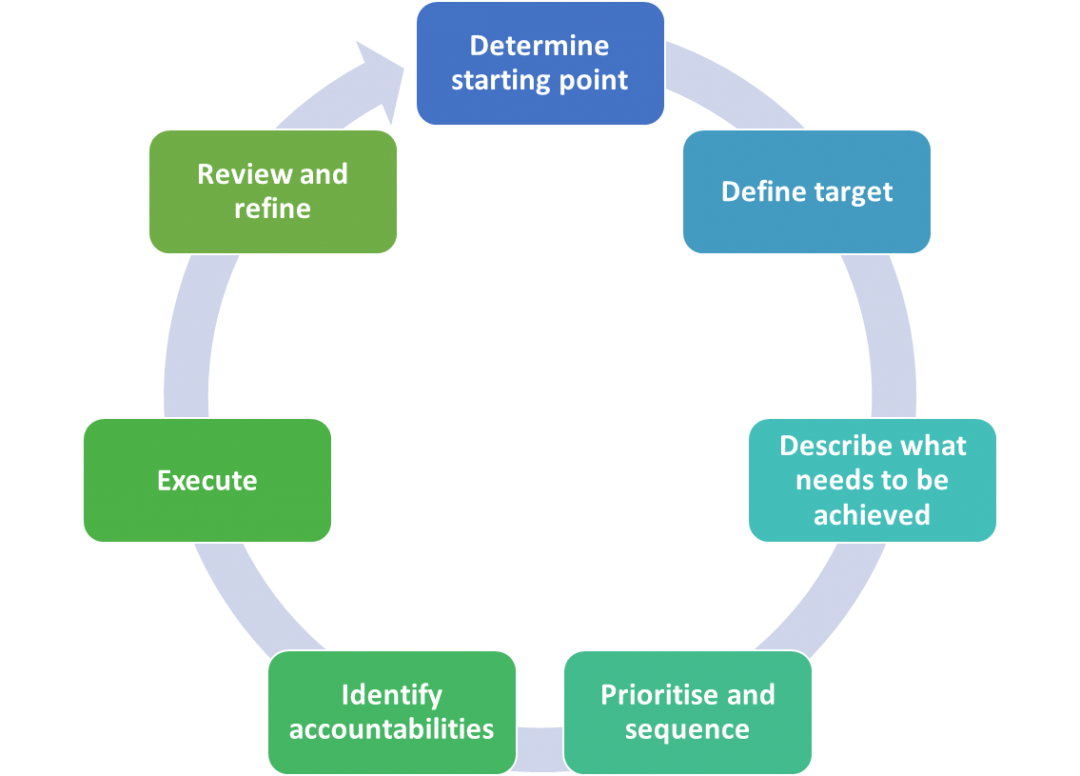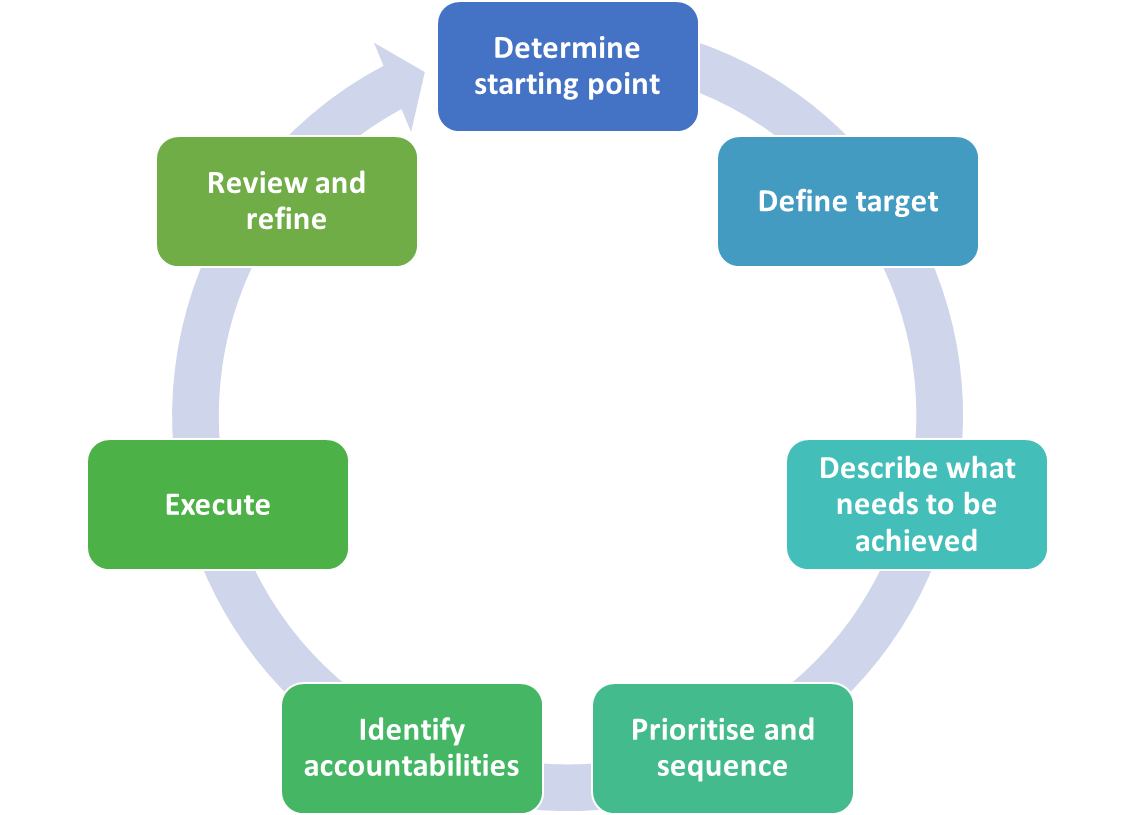Planning the Enterprise: Understanding time horizons.
Blog: The Knowledge Economy
Enterprise strategies are established to assist in moving towards and achieving defined business visions. These strategies are dynamic and are expected to be refined, over time; changes being driven by market forces, business or technical innovation, new legislative requirements or an evaluation of operational and process performance.
A strategic plan provides the systematic process that defines the activities, sequencing of events, resource needs and the inputs and outputs required to achieve the envisioned futures as described by the enterprise strategy. A strategic plan is always mindful of the bigger picture.
This is in contrast to a tactical plan, which focuses on achieving narrowly defined interim objectives with predetermined means that are not necessarily of strategic benefit.
With a focus on multiple futures the strategy planner will, for every time horizon considered, ask the question: “What must be done to reach this point?”
Establishing a Strategy Plan spanning multiple time horizons provides the opportunity to:
- Re-assess how things are progressing.
- Re-baseline through the application of new or changed business drivers.
- Re-prioritise and re-focus on what is important.
Multiple time horizons and a dynamic Strategy Plan avoids the pitfall of putting “all of the ‘business’ eggs in one basket”
Strategy planning requires rigour and commitment to be applied at every step of the process.
- Determine starting point: Undertake an honest assessment of business capability as all subsequent decisions to be made are based on how to realistically move on from the defined starting point.
- Define Target: Focusing on where the strategy wants to position the business over different time horizons (short term, medium term and long term), clearly aligning with the vision, mission, goals and objectives.
- Describe what needs to be achieved: Define the expected objectives and activities needed to be delivered to fill the gap between the starting and target states.
- Prioritise and sequence: Assign a priority and a sequence to all activities to be undertaken that delivers maximum benefit to the business.
- Identify Accountabilities: Determine who is accountable for delivering on the defined activities and how they should communicate progress.
- Execute: Carry out the activities defined within the plan.
- Review and Refine: Review the actual outcome assessing the benefits realised and the progress made towards achieving the defined strategic goals and objectives. The strategy plan should be refocused on the next time horizon and refined with lessons learned.
Failing to plan and only focussing on the short term, immediate issues or perceived needs may provide for the ‘instant gratification’ that many businesses seem to require but will more than likely result in longer term loss of benefit.
Not being able to take advantage of future business opportunities by not being well positioned to do so, is common when preceded by the poor decisions that often arise through tactical rather than strategic planning.
A Strategy Plan provides a mechanism by which a business can maintain focus on those things that are ‘really’ important to achieving its vision and avoids the influences and agendas that are often associated with the needs of individuals to achieve short term personal gain.
Leave a Comment
You must be logged in to post a comment.









